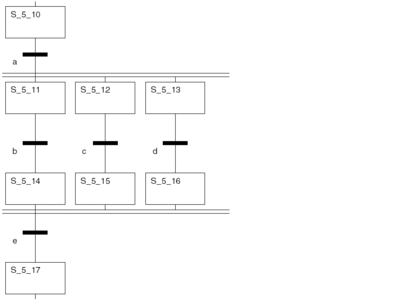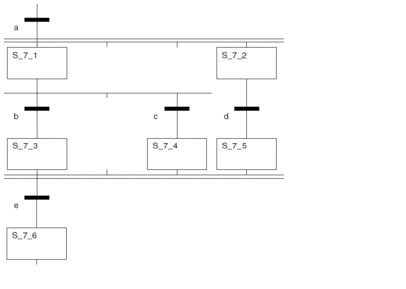Parallel Strings
With parallel branches, switching a single transition leads to a parallel activation of more than one (maximum 32) steps (branches). This applies with Single-Token as well as with Multi-Token.
Processing Parallel Strings:

If... |
Then |
|---|---|
If |
then a sequence runs from |
If steps |
then the strings run independently of one another. |
If |
then a sequence is run from |
Using an Alternative Branch in a Parallel String
If a single alternative branch is used in a parallel string, it leads to blocking the string with Single-Token.
Using an Alternative Branch in a Parallel String:

If... |
Then |
|---|---|
If transition condition |
then a sequence is run to |
If steps |
then the strings run independently of one another. |
If transition condition |
then a sequence runs to |
If transition condition |
then a sequence runs to |
Since (Either Therefore The same problem
occurs if transition condition |
|


